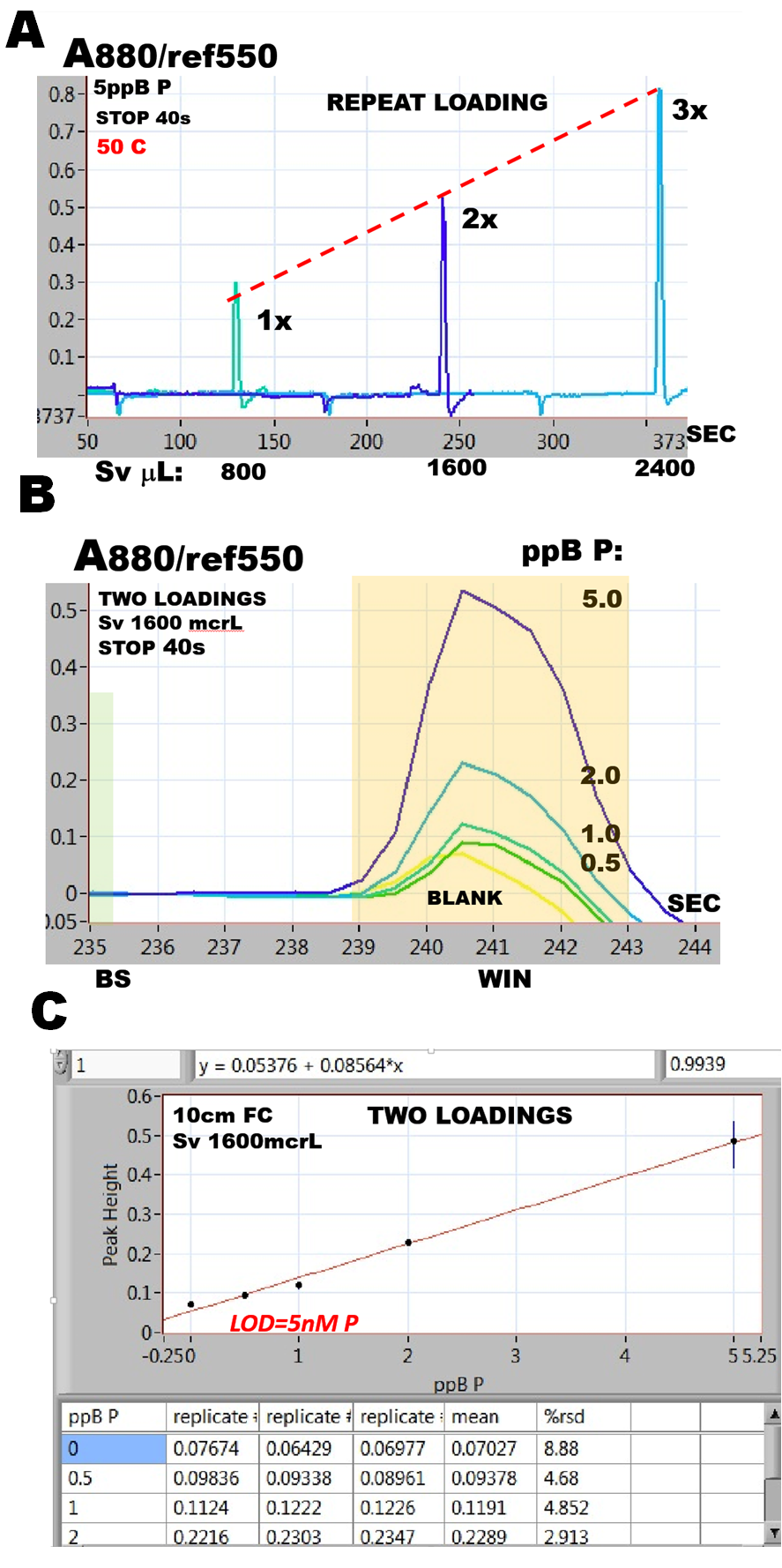Such increase in sensitivity has, of course, its price because the time for completion the assay increases with number of repeated loadings.
Thus in order to complete two loadings (B) the measurement cycle takes 244 seconds with additional 30 seconds needed for initial and final wash of the flow system, and data collection/evaluation, thus yielding sampling frequency of 12s/hr.
The calibration run (B), obtained with two loadings, baseline subtraction (BS) set at 225 seconds and data collection window (WIN) set from 239 to 243 seconds yields a calibration line with a slope of 2.8 AU/mM P and LOD of 5nM P. (C). The calibration range can be extended up to 1microM P by using one loading and by decreasing the injected sample volume.
While reproducibility of measurement in the range up to 2 ppB P is acceptable, closer inspection of data between 0 and 1 ppB P indicates that the determination is influenced by reagent blank since 0 and 0.5 ppB absorbance values are elevated above linear calibration line.
Indeed, higher sensitivity, although being condition ‘ sine qua none’ does not necessarily translate into improved limit of detection – as discussed on page 1.3.14.F.
Trace Analysis of Phosphate by Sorbent Extraction
0 to 1 microM P with LOD= 5nM
3.2.5.
Sensitivity of SE based assay is proportional to the amount of target analyte accumulated on the column and therefore on the volume of sample to be analyzed. Thus in pFI-SE mode sensitivity of assay increases linearly with repeated column loading (A) as the analyte is captured from 800, 1600 or 2400mcrL of sample solution. Slopes of the calibration lines obtained in this way increase according to number of repeated loadings:











